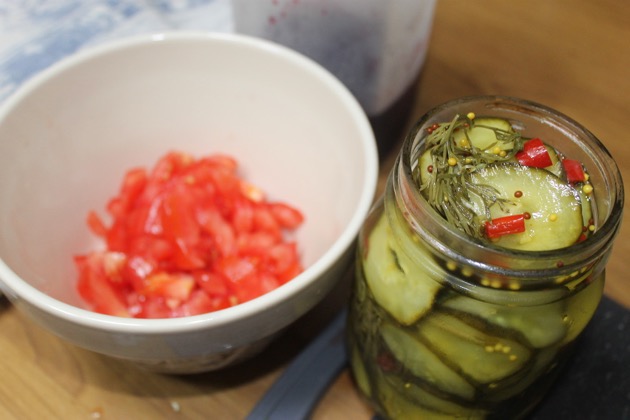There are many food products that are easy to preserve at home. They are usually tastier, healthier and cheaper than those you can buy, and by adding them to your stockpile you’ll be increasing your options when it’s time to prepare a meal. The trick is to find a few hours when you can make some of your favourite preserves, pickles, spice blends or whatever you want to store.
Don't forget that freezing and drying are also good ways of preserving food to be enjoyed later, either out of season or for many months of the year if you have a glut of produce. And baking is a form of preserving and you can bake a wide variety of breads, fruit buns, scrolls, biscuits, crackers, scones, and pancakes. These can be stored as the finished product or in pre-cooked form as batter or dough.
There are many foods that are suitable for preserving: milk can be made into yoghurt or frozen as ice cream or custard, cream can be churned to make butter, fruit can be turned into jam and frozen juice, vegetables can be fermented or made into relish, chutney or sauce and both fruit and vegetables can be dried. And don't forget that you can either use the produce in your backyard or you can look around for cartons or half cartons or fruit and vegetables that are in season and cheap.
Be inspired by the seasons: when your backyard lemon tree produces a good crop or there’s a seasonal abundance of cheap lemons in the shops, pick or buy enough to make lemon butter, cordial, sweet preserved lemon slices, salted lemons, marmalade and lemon juice ice cubes. These will add such splendid variety to your cooking, you’ll be looking around for your next preserving project in no time. You’re never going to preserve everything you want in one afternoon, but make it an ongoing activity and explore the endless options. Instead of meeting your friends for coffee, why not invite them around for a preserving afternoon. You'll have fun, learn new skills and have a few extra jars of food for your cupboards.
Here are links to some of the things I make on a regular basis. All these links will show you the recipe and how I make it up.
Apple rings are a great addition to your stockpile cupboard because they can be used as snacks or, rehydrated, in baking and desserts. If you have an apple tree, use whatever variety you’re growing. If you have to buy apples, buy Granny Smith: they’re available everywhere, they’re fairly cheap and they hold their shape.
Drying fruit is simple. You need to place the apples in an area that will heat up enough to remove all liquid from the fruit without cooking it. When all the moisture has drained from the apples, they’re ready to be eaten or stored away. You can dehydrate your apples in an oven that operates on a very low temperature (about 100°C), on a drying rack in the sun, or in your car if you have warm to hot weather.
There is a bit of flexibility in drying apple rings; it doesn’t need the precision of preserving. I prefer peeled apples because the skin is quite tough when it’s dried, but you can leave the peel on if you prefer. Many people recommend dipping the apple rings in acidulated water, but I have found they don’t need it: there will be a small amount of browning either way. If you want to dip them, add one part fresh lemon juice to three parts water.
These slices can be stored in the cupboard in a sealed jar for up to six months.
1. Peel the apples and slice them thinly and evenly with a mandolin or knife, so that each slice dries at the same rate.
2. Cover an oven tray or cake rack with baking paper. Place the slices on the paper and put the tray in the oven, outside in the sun or in the car. Leave until the slices are completely dry.
The drying time will depend on a few things such as thickness of the slices, the variety of apple, how crisp you want the slices to be and the humidity and temperature. It will take longer in high humidity and less time with high temperature.
You can test to see if the apples have been fully dried by placing a few slices, still warm, in a jar with the lid on. If a lot of condensation forms inside the jar, they aren’t dry enough. It’s okay to leave the slices covered overnight and continue the drying process the following day. Make sure the apple slices are completely dry, or they’ll rot in the jar.
My sponsor Green Living Australia have a lot of information about preserving and offer preserving workshops for those of you around Brisbane or northern NSW.








